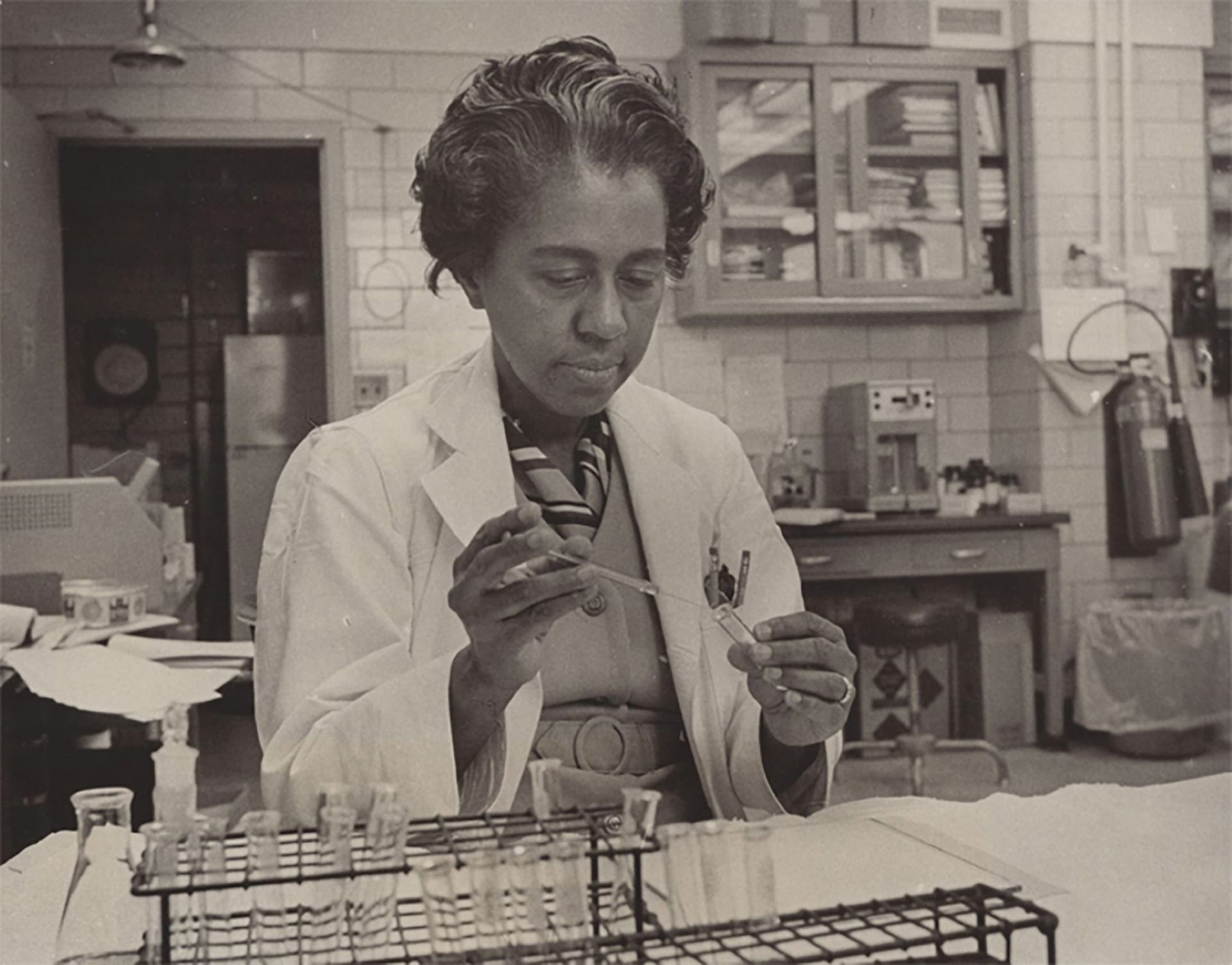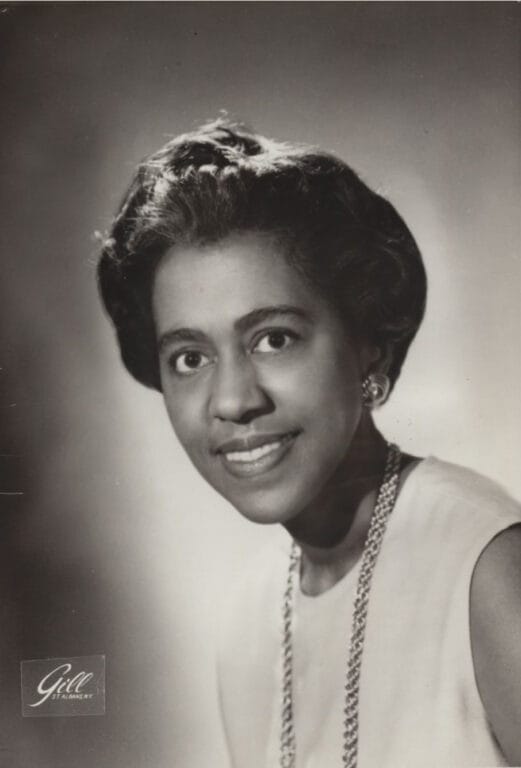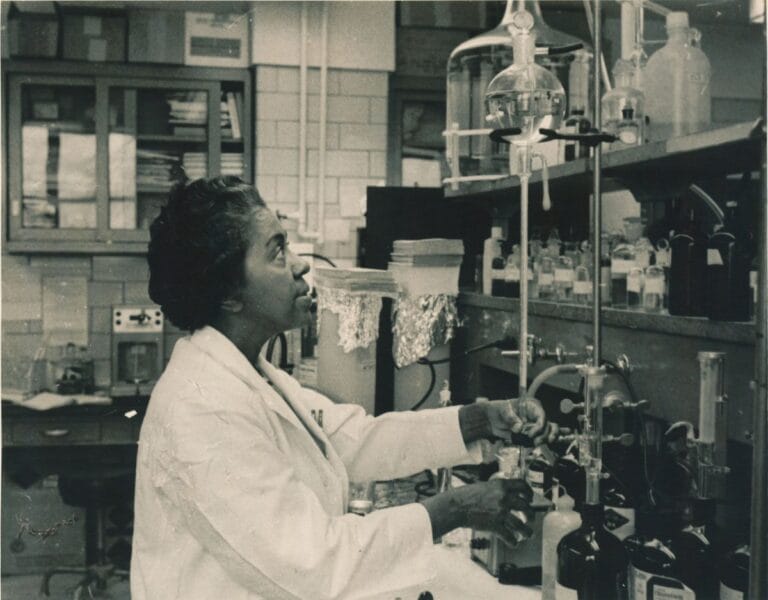Unsung heroes in science: Marie Maynard Daly

Marie Maynard Daly, the first Black woman in the US to receive a PhD in chemistry, worked on nucleic acids, cholesterol links to heart disease and protein synthesis.
Key terms
Base
(or nucleotide) The basic unit of genetic instructions. DNA is encoded in four chemical bases: adenine (A), thymine (T), cytosine (C ) and guanine (G).
Protein
A large molecule made from chains of amino acids, which perform an array of functions with a cell or organism.
Historically, women have faced many struggles to participate in the sciences. Girls were not encouraged to study certain subjects. They were also not allowed to enrol in some universities. As full-fledged researchers, women found it difficult to obtain positions that matched their qualifications. They found it hard to get their research and publications accepted or recognized, and had to work twice as hard as their male peers to compete for funding and admission to professional societies. Well into the 20th century, women had to juggle their roles as wives and homemakers in an unaccommodating patriarchal world. Despite this, the contributions of many women in the sciences have not only been significant but also ground breaking.
Amazingly, people are often still unaware of the many women scientists, because their stories are often untold, yet the impact of women is deeply inscribed onto the history of science. Marie Maynard Daly is one such woman – and this is her story.
Early Days
Marie was born in Queens, New York City in 1921. Her parents were African American: her father, Ivan, was an immigrant from the British West Indies, and her mother, Helen, was from Washington, D.C. Ivan hoped to be a chemist, and attended Cornell University, but money became a problem and he dropped out of college, becoming a postal clerk to support his family.
Marie’s mother, Helen, did not work outside the home. She spent a lot of time with her children, and read books to Marie every night. Marie grew to love books – she recalls that it was while reading about science and the achievements of scientists that she developed the desire to become a scientist herself.
Growing up, Marie was aware of her father’s unrealized ambition. She worked hard and did well at Hunter College, where her dream was encouraged and supported. Marie recounts that attending a high school with female students and female teachers – at a time when expectations of girls were often low – encouraged her to consider a career as a scientist seriously. She decided to follow her father by studying chemistry, and went to Queens College, where she continued to excel.
An outstanding student
Marie graduated in 1942 in Chemistry as a Queens College Scholar, one of the top 2.5% of the graduating class. She joined the graduate school at New York University, while also working as a laboratory assistant in the chemistry department at Queens. She got her M.S. degree in Chemistry in 1943, remained at Queens as a tutor for 1 year and then, at the close of the Second World War, joined Columbia University where she received her PhD in 1947.

This was a monumental achievement, not only because she completed her PhD in an impressive 3 years, but also because she became the first Black person to obtain a PhD from Columbia University, and the first Black woman in America to receive a chemistry PhD.
Research, DNA and histones
Marie received a grant for her postdoctoral studies from the American Cancer Society, and spent seven productive years working at the Rockefeller Institute, where she studied the composition of cell nuclei (today known as DNA). Marie worked out which nucleic acid bases are the main building blocks of DNA (adenine, guanine, thymine and cytosine), and that these are the same and are found in the same proportion across all lifeforms.
Marie also identified and characterised histones, the essential proteins that help control the folding of DNA, by developing new methods for the fractionation of nuclear material and identifying its contents. Her research solved an essential puzzle in understanding how cells determine which parts of the genome to read. As James Watson accepted his Nobel Prize for discovering the double helix structure of DNA, he cited one of Marie’s papers on ribonucleoproteins and protein synthesis as contributing to his work. Her discoveries about nucleic acids and different types of histones are now considered fundamental in both cell biology and genomics. Marie recalled her experience at Rockefeller as awesome and inspiring, both because of the excitement of the science she was doing, and the legendary scientists she met there.
Cholesterol and atherosclerosis
In 1955, Marie moved to Columbia University where she carried out her most famous work with Dr Quentin B Deming – she found the link between cholesterol in the diet and clogged arteries. She also established that high blood pressure was a precursor to atherosclerosis. Marie and Quentin continued this work when they moved to the Albert Einstein College of Medicine, where Marie also studied creatine, an essential metabolite for many cells. She taught biochemistry to generations of medical students, becoming a Professor at Albert Einstein where she worked until her retirement in 1986.

Helping others
While focusing on her illustrious career of teaching and scientific research, Marie was also committed to helping increase the enrolment of minority students in both medical school and graduate school. In 1988, she established a scholarship fund at Queens College in honour of her father, so students from minority groups had financial support to complete their studies.
Marie’s contributions laid the foundation for many key discoveries in genomics, medicine, chemistry and beyond. Today, we recognise that her contributions have changed the world. Her struggle to overcome poverty, and both gender and racial bias, shines as a beacon of hope for minorities all across the world.
Article written by Martin Wagah, PhD Student at the Wellcome Sanger Institute.